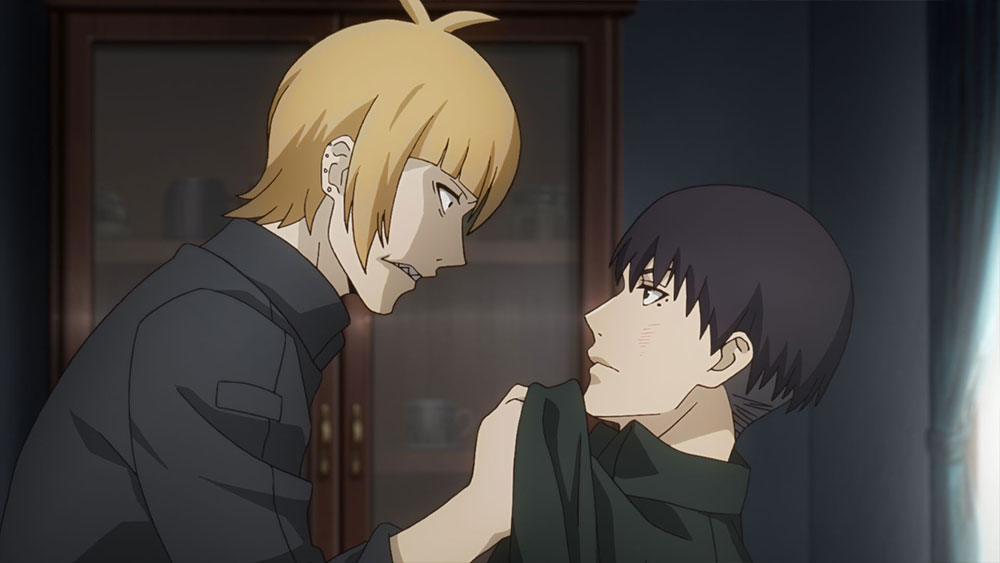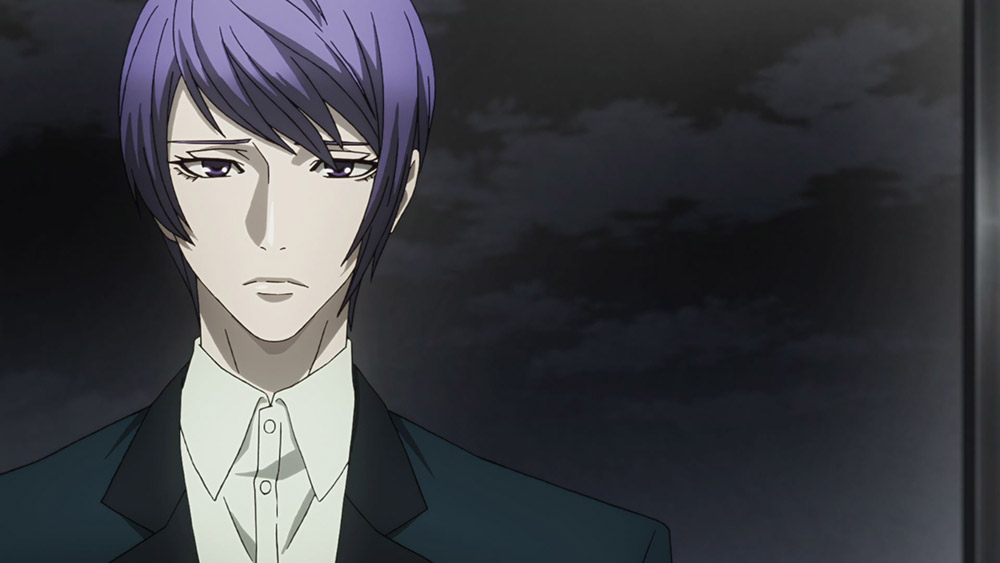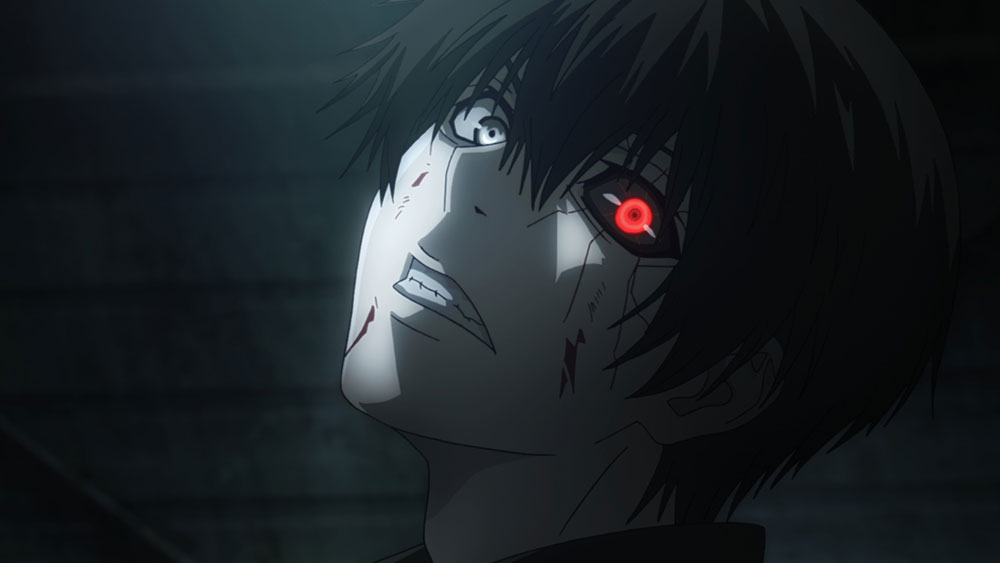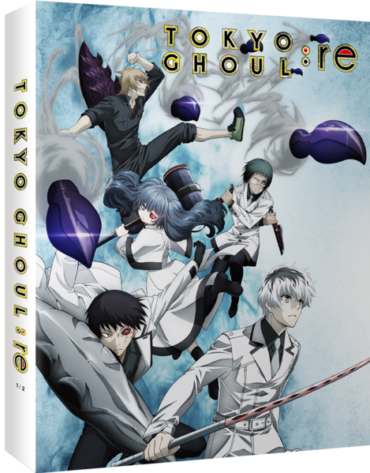Tokyo Ghoul: re Part 1 Review
Tokyo Ghoul: re is the sequel to Tokyo Ghoul and Tokyo Ghoul: Root A, anime series’ based on Sui Ishida’s popular manga franchise of the same name. It originally broadcast in 2018 from 3rd April to 28th June and roughly adapts the first 58 chapters of the manga.
Curiously, the producers of the series decided to follow the manga canon and, therefore, a majority of the events in Root A are ignored entirely here, including Kaneki’s defection to Aogiri. The anime does attempt to plug in the gaps briefly but otherwise anime-only viewers may initially be confused with the proceedings.

To briefly summarise, Tokyo Ghoul was adapted into two anime season known as Tokyo Ghoul and Root A, and though the former moved story arcs around and missed out content it otherwise followed the manga’s first seven volumes fairly faithfully. Root A, however, changed the storyline significantly, taking it in a different direction and featuring an alternative conclusion.
This first part adapts the first few arcs of manga and takes place around two years after the Owl Suppression Arc which saw Kaneki face off against prodigy Kishou Arima and Anteiku burn to the ground.

The plot now follows a group of up-and-coming Ghoul investigators called the Quinx Squad, four one-eyed human-Ghoul hybrids who work for the CCG (Commission of Counter Ghoul). They are led by Haise Sasaki, a kind but lethal Investigator who has deep-rooted secrets and ties to the world of Ghouls.
The Quinx Squad consists of Kuki Urie, a self-absorbed type who thinks he’s above everyone and frequently defies orders. Ginshi Shirazu, a brash but likeable sort that has a habit of getting himself into trouble, Tooru Mutsuki, the shy and reserved type that’s struggling with their Ghoul abilities and Saiko Yonebayashi, a NEET who seldom leaves her bedroom, let alone assists on missions until she’s forced to.

Their leader is Haise Sasaki, a kind but sometimes ruthless One-Eyed Ghoul who has a powerful Kagune and a mysterious past.
The first episode kicks off by introducing the viewer to these new characters as they’re investigating a Ghoul with the code name Torso, a serial killer known for driving around in a taxi and dismembering his victims. Though they’re unsuccessful in apprehending Torso they soon come across another CCG target referred to as Serpent.

These initial episodes set the tone for the series each of the arcs revolves around the CCG investigating Ghouls who pose serious threats to the public. We then see an investigation into a murderous and perverse Ghoul known as Nutcracker and her ties to a sinister underground auction where humans are sold to the highest bidder.

The final arc of the season is the real turning point as familiar faces from Kaneki’s past force him to reconsider who he really is. What makes this season so fascinating is getting to see more of the CCG in action and the various investigators who had previously been shown as the main antagonistic force now being given more personality and a sympathetic storyline.

The problem, however, is that the story features an expansive cast and with 12 episodes some get more development than others. I was pleasantly surprised though to see that the middle episodes managed to slow down and give some poignant moments.
Looking at the direction, Toshinori Watanabe presents some solid setpieces and subtler moments though sadly the animation and overall design of re lets it down and lacks the style and impact the original series’ had. Whilst some of the fights were engaging to watch the stiffness of the characters and movements was disappointingly distracting.
Watanabe also had the difficult job of whittling down the first third of the manga to 12 episodes and, despite all my criticisms, has delivered arguably the most faithful adaptation Tokyo Ghoul has gotten to date.
Tokyo Ghoul: re also saw the return of composer Yutaka Yamada who, once again, delivers a soundtrack that helps to elevate the series as the little intricacies and digital noise really add to every scene they feature in. Fans may also appreciate the return of Unravel, the OP from the first series, but it felt a bit ill-fitting where it was featured.

The OP, Asphyxia by Cö Shu Nie took some time to grow on me due to its fast-paced nature but it suits the admittedly unremarkable (and spoilerific) opening animation (a lot of characters and floating heads). The ED, Half by Ziyoou-vachi is a song that took some time to grow on me, but wasn’t a bad choice from mangaka Sui Ishida.
The included discs are the same as those produced by Funimation for their release and, as such, contain the standard special features you’d expect like episode commentaries and interviews with the English Dub cast as well as textless versions of the OP/ED. The video and audio quality is decent, though the overall design of the anime doesn’t lend itself to the most stunning presentation, regardless of disc encoding.

Anime Limited have released the series in both Limited Collector’s Edition and Standard Edition formats with the former being a chipboard box with a digipack and 36-page booklet. The booklet itself is in both English and French which was a bit distracting but offers some decent enough content in the form of character bios and artwork.
Overall, Tokyo Ghoul: re Part 1 is a solid anime series that adequately adapts its source material but often lacks depth with its expansive cast and sacrifices story elements to fit a 12 episode run. It is arguably the most faithful adaptation the series has seen but at the loss of more stylistic flair, character development and world building.


